Table of Contents
Claude Debussy: The 100 most inspiring musicians of all time
The works of French composer Claude Debussy (Achilles-Claude Debussy) (b. Aug. 22, 1862, Saint-German-en-Laye, France —d. March 25, 1918, Paris) have been a seminal force in the music of the 20th century. Debussy developed a highly original system of harmony and musical structure that expressed in many respects the ideals to which the impressionist and symbolism painters and writers of his time aspired.
Early Period
Debussy showed a gift as a pianist by the age of nine. He was encouraged by Madame Mauté de Fleurville, who was associated with the Polish composer Frédéric Chopin, and in 1873 he entered the Paris Conservatory, where he studied the piano and composition, eventually winning in 1884 the Grand Prix de Rome with his cantata L’Enfant prodigue (The Prodigal Child ).
While living with his parents in a poverty-stricken suburb of Paris, he unexpectedly came under the patronage of a Russian millionairess, Nadezhda Filaretovna von Meck, who engaged him to play duets with her and her children. He traveled with her to her palatial residences throughout Europe during the long summer vacations at the Conservatory. In Paris during this time he fell in love with a singer, Blanche Vasnier, the beautiful young wife of an architect; she inspired many of his early works.

This early style is well illustrated in one of Debussy’s best-known compositions, Clair de Lune. The title refers to a folk song that was the conventional accompaniment of scenes of the love-sick Pierrot in the French pantomime; and indeed the many Pierrot-like associations in Debussy’s later music, notably in the orchestral work Images (1912) and the Sonata for Cello and Piano (1915; originally titled Pierrot fâché avec la lune [“Pierrot Vexed by the Moon”]), show his connections with the circus spirit that also appeared in works by other composers.
Claude Debussy’s Sheet Music download.
Middle Period
As a holder of the Grand Prix de Rome, Debussy was given a three-year stay at the Villa Medici, in Rome, where, under what were supposed to be ideal conditions, he was to pursue his creative work. Debussy eventually fled from the Villa Medici after two years and returned to Blanche Vasnier in Paris. At this time Debussy lived a life of extreme indulgence. Once one of his mistresses, Gabrielle (“Gaby”) Dupont, threatened suicide. His first wife, Rosalie (“Lily”) Texier, a dressmaker, whom he married in 1899, did in fact shoot herself, though not fatally, and, Debussy himself was haunted by thoughts of suicide.
The main musical influences on Debussy were the works of Richard Wagner and the Russian composers Aleksandr Borodin and Modest Mussorgsky. Wagner fulfi lled the sensuous ambitions not only of composers but also of the symbolist poets and the impressionist painters.
Wagner’s conception of Gesamtkunstwerk (“total art work”) encouraged artists to refi ne upon their emotional responses and to exteriorize their hidden dream states, often in a shadowy, incomplete form; hence the more tenuous nature of the work of Wagner’s French disciples.
It was in this spirit that Debussy wrote the symphonic poem Prélude à l’après-midi d’un faune (1894). Other early works by Debussy show his affinity with the English Pre-Raphaelite painters; the most notable of these works is La Damoiselle élue (1888), based on The Blessed Damozel (1850), a poem by the English poet and painter Dante Gabriel Rossetti.
In the course of his career, however, which covered only 25 years, Debussy was constantly breaking new ground. His single completed opera Pelléas et Mélisande (first performed in 1902) demonstrates how the Wagnerian technique could be adapted to portray subjects like the dreamy nightmarish figures of this opera who were doomed to self-destruction.
Debussy and his librettist, Maurice Maeterlinck, declared that they were haunted in this work by the terrifying nightmare tale of Edgar Allan Poe, The Fall of the House of Usher. The style of Pelléas was to be replaced by a bolder, more highly coloured manner. In his seascape La Mer (1905) he was inspired by the ideas of the English painter J. M.W. Turner and the French painter Claude Monet. In his work, as in his personal life, he was eager to gather experience from every region that the imaginative mind could explore.
Late Period
In 1905 Debussy’s illegitimate daughter, Claude-Emma, was born. He had divorced Lily Texier in 1904 and subsequently married his daughter’s mother, Emma Bardac. For his daughter he wrote the piano suite Children’s Corner (1908).
Debussy’s spontaneity and the sensitive nature of his perception facilitated his acute insight into the child mind, an insight noticeable particularly in Children’s Corner; in the Douze Préludes, two books (1910, 1913; “Twelve Preludes”), for piano; and in the ballet La Boîte à joujoux (1st perf. 1919;
The Box of Toys). In his later years, it is the pursuit of illusion that marks Debussy’s instrumental writing, especially the strange, otherworldly Cello Sonata. This noble bass instrument takes on, in chameleon fashion, the character of a violin, a flute, and even a mandolin.
Evolution of His Work
Debussy’s music marks the first of a series of attacks on the traditional language of the 19th century. He did not believe in the stereotyped harmonic procedures of the 19th century, and indeed it becomes clear from a study of mid-20th-century music that the earlier harmonic methods were being followed in an arbitrary, academic manner.
Debussy’s inquiring mind similarly challenged the traditional orchestral usage of instruments. He rejected the traditional dictum that string instruments should be predominantly lyrical. The pizzicato scherzo from his String Quartet (1893) and the symbolic writing for the violins in La Mer, conveying the rising storm waves, show a new conception of string colour. Similarly, he saw that woodwinds need not be employed for fireworks displays; they provide, like the human voice, wide varieties of colour.
Debussy also used the brass in original colour transformations. In fact, in his music, the conventional orchestral construction, with its rigid woodwind, brass, and string departments, finds itself undermined or split up in the manner of the Impressionist painters. Ultimately, each instrument
becomes almost a soloist, as in a vast chamber-music ensemble. Finally, Debussy applied an exploratory approach to the piano, the evocative instrument par excellence.
In his last works, the piano pieces En blanc et noir (1915; In Black and White) and in the Douze Études (1915; “Twelve Études”), Debussy had branched out into modes of composition later to be developed in the styles of Stravinsky and the Hungarian composer Béla Bartók. It is certain that he would have taken part in the leading movements in composition of the years following World War I. His life, however, was tragically cut short by cancer.
The Best of Debussy
Pianist: Pascal Rogé
Track List:
Arabesque Nº1 4:21 Arabesque Nº2 7:49 Clair De Lune 13:29 Passepied 16:46 Rêverie 21:40 Hommage A Rameau 29:22 Voiles 33:41 Les Sons Et Les Parfums Tournent Dans L’air Du Soir 37:58 La Fille Aux Cheveux De Lin 41:02 La Cathédral Engloutie 48:10 Musiciens 50:35 Le Petit Berger 54:05 Golliwogg’s Cakewalk 57:13 L’isle Joyeuse 1:03:35 Prelúdio para a tarde de um fauno
Browse in the Library:
| Artist or Composer / Score name | Cover | List of Contents |
|---|---|---|
| A dozen A Day Book 1 Technical exercises for the piano |
 |
A dozen A Day Book 1 Technical exercises for the piano |
| A dozen A Day Book 2 Technical exercises for the piano |
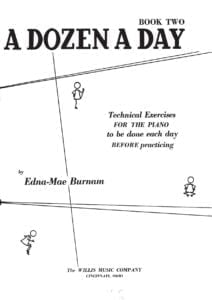 |
|
| A dozen A Day Book 3 Technical exercises for the piano |
 |
|
| A dozen A Day Book 4 Technical exercises for the piano |
 |
|
| A dozen A Day Mini Book Technical exercises for the piano |
 |
|
| A dozen Day Preparatory Book Technical exercises for the piano |
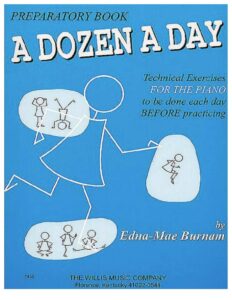 |
|
| A Farewell To Arms Love Theme From A Farewell To Arms film by Mario Nascimbene Francis Webster 1957 |
 |
|
| A Felicidade (Antonio Carlos Jobim) | ||
| A Festival Gathering Of Carols (Musescore File).mscz | ||
| A Fine Frenzy – Almost Lover |
 |
|
| A Fistful of Dollars (Ennio Morricone) | ||
| A Generative Theory Of Tonal Music by Fred Lerdahl and Ray Jackendoff (Book) |
 |
|
| A Guide To Guitar Chords by Curt Sheller |
 |
A Guide To Guitar Chords by Curt Sheller |
| A Guide To Musical Analysis by Nicholas Cook (Book) |
 |
|
| A Handbook Of Piano Playing (By Eric Hope) (1962) |
 |
|
| A Heart Full Of Love (Musescore File).mscz | ||
| A love suicide (Yutaka Minobe) | ||
| A Love Supreme (by Ashley Kahn) The story of john Coltrane’s signature album (Book) |
 |
|
| A Media Luz (Edgardo Donato) | ||
| A Modern Approach To Jazz Rock And Fusion For Guitar with Tablature |
 |
A Modern Approach To Jazz Rock And Fusion For Guitar |
| A Modern Method For Guitar (Berklee) 1 by William Leavitt |
 |
A Modern Method Berklee 1 |
| A Modern Method For Guitar (Berklee) 2 by William Leavitt |
 |
A Modern Method For Guitar (Berklee) 2 |
| A Modern Method For Guitar (Berklee) 3 by William Leavitt |
 |
A Modern Method For Guitar (Berklee) 3 |
| A MOZART REINCARNATED (Ennio Morricone) |
 |
|
| A Mozart Reincarnated by Ennio Morricone (Musescore File).mscz | ||
| A New Approach To Ear Training by Leo Kraft (BOOK) |
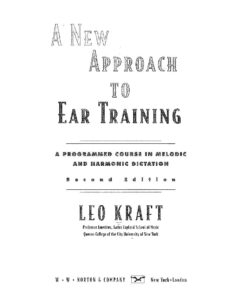 |
|
| A New Approach To Piano Technique (By Ruth A. Dickerson) (1962) |
 |
A new approach to piano technique |
| A Night In Tunisia – Dizzy Gillespie.mscz | ||
| A Pedal Method For The Piano (By Albert F Venino) (1893) |
 |
|
| A Popular Account Of Ancient Musical Instruments And Their Development by William Lynd (Book 1897) |
 |
|
| A Rockin’ Christmas Piano Vocal Guitar |
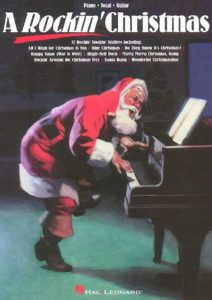 |
20 songs to sing on a rockin’ Christmas Eve Includes: All I Want for Christmas Is You * Grandma Got Run Over by a Reindeer * Happy Xmas (War Is Over) * Jingle-Bell Rock * Merry Merry Christmas Baby * Rockin’ Around the Christmas Tree * Santa Baby & moreRockin Christmas |
| A Single Man – George’s Waltz (Shigeru Umebayashi) | ||
| A Single Man – Stillness of the Mind (Abel Korzeniowski) | ||
| A Smooth Jazz Christmas – Mellow Seasonal Favorites for Piano arr. Roger House |
 |
A Smooth Jazz Christmas – Mellow Seasonal Favorites for Piano arr. Roger House |
| A Song For You – Leon Russell Ray Charles (Musescore File).mscz | ||
| A Star Is Born – Always Remember Us This Way Lady Gaga |
 |
|
| A Star Is Born – Shallow Lady Lady Gaga |
 |
|
| A Tale Of Two Sisters Ost – Epilogue Piano Solo |
 |
|
| A Thousand Years – Twilight OST (Christina Perri) | ||
| A Time For Love – Johnny Mandel |
 |
|
| A Time For Us – Guitar TABlature |
 |
|
| A Time For Us (Love Theme from Romeo and Juliet) Nino Rota |
 |
|
| A Time For Us (Romeo and Juliet OST) Nino Rota | ||
| A Touch Of Jazz 14 well-known hymns, gospel songs and contemporary praise songs by Wolaver Bill |
 |
A Touch Of Jazz 14 well-known hymns, gospel songs and contemporary praise songs by Wolaver Bill |
| A Tribute To Ella Fitzgerald Piano Vocal Guitar |
 |
A tribute to ELLA FITZGERALD |
| A Walk To Remember – Only Hope | ||
| A whiter shade of pale – Procul Harum | A whiter shade of pale – Procul Harum | |
| AaRON U-turn Lili Piano |
 |
|
| Ab Ovo – Joep Beving (Musescore File).mscz | ||
| Abba – Abba Gold – Greatest Hits |
 |
ABBA Gold Geatest Hits booksong sheet music |
| Abba – Chiquitita | ||
| Abba – Dancing Queen | ||
| Abba – Fernando | ||
| Abba – I Have A Dream | ||
| Abba – Like An Angel Passing Through My Room | ||
| Abba – Mamma Mia | ||
| Abba – Slipping Through My Fingers | ||
| Abba – Thank You For The Music | Abba-Thank-You-For-The-Music 1st page | |
| ABBA – Thank You For The Music (Piano Vocal Guitar) | ABBA – Thank You For The Music (Piano Vocal Guitar) | |
| ABBA – Thank You For the Music (Piano vocal Guitar) (Musescore File).mscz | ||
| Abba – Thank You For The Music Piano & vocal | Abba – Thank You For The Music-abba-satb | |
| Abba – The Winner Takes It All | ||
| ABBA Dancing Queen Easy Piano Solo |
 |
|
| ABBA Fernando (Piano Solo arr.) |
 |
|
| ABBA Fernando (Piano Solo arr.).mscz | ||
| ABBA Greatest Hits |
 |
ABBA GREATEST HITS SHEET MUSIC BOOK |
| ABBA I Have A Dream |
 |
|
| Abba The Very Best Vol 1 Easy Piano Hans Gunter Heumann Pop Classics For Piano |
 |
Abba The Very Best Vol 1 Easy Piano |
| Abba The Very Best Vol 2 Easy Piano Hans Gunter Heumann Pop Classics For Piano |
 |
Abba The Very Best Vol 2 Easy Piano |
| Abbey Lincoln Songbook |
 |
Abbey Lincoln Songbook |
| Abbey Lincoln Songbook Piano Vocal Guitar Chords |
 |
Abbey Lincoln Songbook Piano Vocal Guitar Chords |
| Abdullah Ibrahim – The Piano World Of |
 |
Abdullah Ibrahim, The Piano World Of |
| Abdullah Ibrahim The African Piano Of Abdullah Ibrahim Vol 1 |
 |
Abdullah Ibrahim The African Piano Of Abdullah Ibrahim Vol 1 |
| Abdullah Ibrahim The Wedding (piano solo transcription sheet music, partition) |
 |
|
| Abel Korzeniowski – Death Is My Heir (from Romeo and Juliet) |
 |
|
| ABRSM Jazz Piano Pieces Grade 1 to 5 |
 |
ABRSM Jazz Piano Pieces Grade 1 to 5 ABRSM Jazz Piano Pieces Grade 5ABRSM Jazz Piano Pieces Grade 5 |
| ABRSM Piano Exam Pieces Grade 1 (2016) |
 |
ABRSM Piano Exam Pieces Grade 1 (2016) |
| ABRSM Piano Scales, Arpeggios Grade 8 |
 |
|
| ABRSM Piano Scales, Arpeggios and broken chords Grade 1 |
 |
|
| ABRSM Piano Scales, Arpeggios and broken chords Grade 4 |
 |
ABRSM Piano Scales, Arpeggios and broken chords Grade 4 |
| ABRSM Piano Scales, Grade 2 A Guide for Students and Teachers | ABRSM Piano Scales, Grade 2 A Guide for Students and Teachers | |
| ABRSM – Time pieces for guitar vol. 1 |
 |
|
| ABRSM – Time pieces for guitar vol. 2 |
 |
|
| ABRSM 2017 18 Piano Exam Pieces Grade 1 |
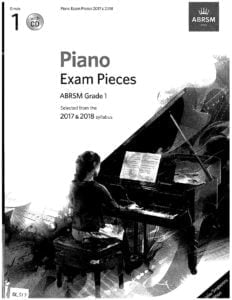 |
ABRSM 2017 18 Piano Exam Pieces Grade 1 |
| ABRSM 2017 18 Piano Exam Pieces Grade 2 |
 |
ABRSM 2017 18 Piano Exam Pieces Grade 2 |
| ABRSM 2017 18 Piano Exam Pieces Grade 3 |
 |
|
| ABRSM 2017 18 Piano Exam Pieces Grade 4 |
 |
|
| ABRSM 2017 18 Piano Exam Pieces Grade 5 |
 |
|
| ABRSM 2017 18 Piano Exam Pieces Grade 6 |
 |
|
| ABRSM 2017 18 Piano Exam Pieces Grade 7 |
 |
|
| ABRSM 2017 18 Piano Exam Pieces Grade 8 |
 |
|
| ABRSM 2021-2022 Piano Exam Pieces Grade 1 |
 |
|
| ABRSM 2021-2022 Piano Exam Pieces Grade 2 |
 |
|
| ABRSM 2021-2022 Piano Exam Pieces Grade 3 |
 |
|
| ABRSM 2021-2022 Piano Exam Pieces Grade 5 |
 |
|
| ABRSM 2021-2022 Piano Exam Pieces Grade 6 |
 |
|
| ABRSM 2021-2022 Piano Exam Pieces Grade 8 |
 |
|
| ABRSM 2021-2022 Piano Exam Pieces Initial Grade |
 |
ABRSM 2021-2022 Piano Exam Pieces Initial Grade |
| ABRSM Aural Training In Practice Book 1 Grades 1 to 3 |
 |
|
| ABRSM Aural Training In Practice Book 2 Grades 4 and 5 |
 |
|
| ABRSM Discovering Music Theory (Complete) Grades 1 to 5 Workbook by Simon Rushby (2020 Exams) |
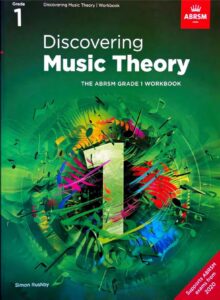 |
ABRSM Discovering Music Theory (Complete) Grades 1 to 5 Workbook by Simon Rushby (2020 Exams) contents |
| ABRSM Erster Verlust Grade 4 ABRSM Piano Exam Pieces 2021 & 2022 |
 |
|
| ABRSM Etude In A Minor – Dmitry Kabalevsky ABRSM Grade 4 Piano Exam Pieces 2021 & 2022 |
 |
|
| ABRSM Grade 2 – Inter-City Stomp byChristopher Norton From Microjazz Collection (Sheet Music) |
 |
|
| ABRSM Initial Grade Piano Exam Pieces 2023 2024 |
 |
|
| ABRSM Minuet and Trio D 41 No 21 – Franz Schubert ABRSM Grade 4 Piano Exam Pieces 2021 & 2022 |
 |
|
| ABRSM More Music Theory Sample Papers Grade 5 For New Format |
 |
|
| ABRSM Music Theory In Practice, Grade 1 (Eric Taylor) |
 |
|
| ABRSM Music Theory In Practice, Grade 2 (Eric Taylor) |
 |
|
| ABRSM Music Theory Past Papers Grade 1 2004 |
 |
|
| ABRSM Music Theory Past Papers Grade 4 2016 |
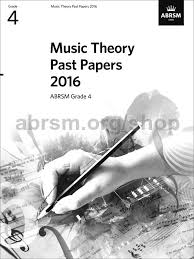 |
|
| ABRSM Music Theory Past Papers Grade 5 2012 |
 |
|
| ABRSM Music Theory Past Papers Grade 6 2013 |
 |
|
| ABRSM Nikki Iles Danny Boy ABRSM Piano Exam Grade 8 2023 Jazz Piano arr. inspired by Bill Evans |
 |
|
| ABRSM Nikki Iles Friends Book 1 Intermediate Jazz Pieces For Piano |
 |
ABRSM Nikki Iles Friends Book 1 Intermediate Jazz Pieces For Piano |
| ABRSM Nikki Iles Friends Book 2 Intermediate To Advanced Jazz Pieces For Piano |
 |
ABRSM Nikki Iles Friends Book 2 Intermediate To Advanced Jazz Pieces For Piano |
| ABRSM Nikki Iles The Elephant Parade ABRSM piano Exam |
 |
|
| ABRSM Piano 2025-2026 Grade 8 C3 A Nightingale Sang in Berkeley Square by Sherwin – Maschwitz |
 |
|
| ABRSM Piano Exam 2007-2008 Grade 3 |
 |
|
| ABRSM Piano Exam 2015-16 Grade 3 |
 |
ABRSM Piano Exam 2015-16 Grade 3 |
